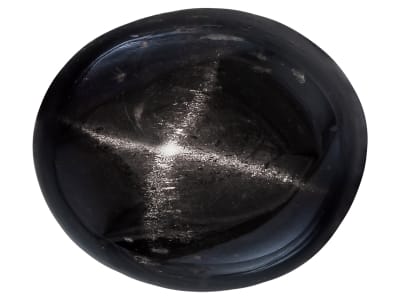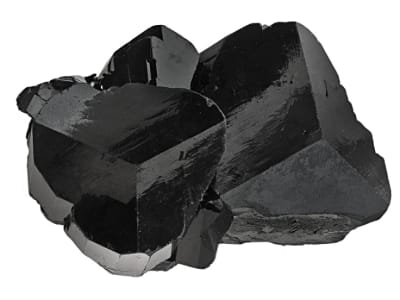Schorl is the most common species of tourmaline, however, it is not as commonly faceted as its brightly colored brothers and sisters because of its black color. Well-formed schorl crystals make striking mineral specimens and long, thin schorl crystals are frequently found in quartz, called "tourmalinated quartz."
General Information
Common Name
Schorl
Species
Tourmaline
Transparency
Opaque-Semitranslucent
Dispersion
Strength: None
Refractive Index
1.635-1.672
Birefringence
0.027- 0.032
Optic Character
Uniaxial
Optic Sign
Negative
Polariscope Reaction
Doubly Refractive (DR)
Fluorescence
SWUV: Inert
LWUV: Inert
LWUV: Inert
Pleochroism
Unobservable
Hardness
7-7.5
Streak
White
Specific Gravity
3.000-3.260 Range:0.2/-0.06 Typical:3.060
Toughness
Good
Inclusions
Schorl often has tube-like 2-phase inclusions running parallel to crystal's principle axis, film-like, irregular or thread-like liquid inclusions, angular thin film mirror-like inclusions, gas inclusions in mesh-like pattern, parallel oriented hollow tubes or needles.
Luster
Vitreous, Resinous
Stability
Very Good
Fracture
Conchoidal, Uneven
Cleavage
Poor, in two directions
Chemical Name
Sodium Iron Aluminum Boro-Silicate Hydroxide
Chemical Formula
Na(Fe32+)Al6(Si6O18)(BO3)3(OH)3(OH)
Crystal System
Trigonal
Chemistry Classification
Silicate
Schorl Colors
-
 Black
Black -
 Brown
Brown -
 Green
Green
Alternate Names
black tourmaline
Countries of Origin
Pakistan; Unknown; Namibia; Madagascar


